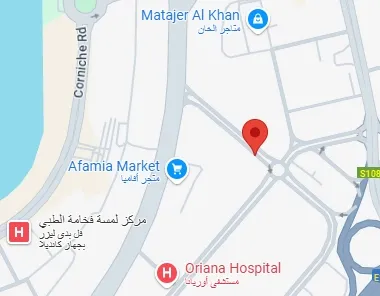Website speed is no longer a luxury—it’s a necessity, especially in a fast-growing digital economy like the United Arab Emirates. In a market where users expect instant access to information and services, a slow-loading website can be a dealbreaker. Whether you’re a local startup, an e-commerce store, or an international business expanding into the Middle East, understanding speed optimization tips for websites targeting the UAE is crucial for success.
In this article, we’ll dive into actionable, SEO-friendly strategies that will help you build faster, more responsive websites that delight UAE users and improve your search rankings.
Why Website Speed Matters in the UAE
Before exploring the specific speed optimization tips for websites targeting the UAE, it’s important to understand why speed is such a vital factor in this region:
High mobile penetration: With over 90% internet penetration and mobile-first behaviors, UAE users expect lightning-fast mobile experiences.
Competitive online landscape: Dubai and Abu Dhabi are hubs for tech innovation. Businesses must stand out, and website speed is a huge differentiator.
Google’s Core Web Vitals: Website performance is directly linked to SEO. Faster websites rank better on search engines, especially in localized markets like the UAE.

1. Use a Local or Regional Hosting Provider
When it comes to speed optimization tips for websites targeting the UAE, hosting location is one of the most overlooked factors. If your server is located far from your audience, it will take longer to load content.
Recommendations:
Choose a hosting provider with data centers in the UAE or GCC region.
If regional hosting isn’t an option, use a reliable Content Delivery Network (CDN) to cache your site closer to users in the UAE.
UAE-based CDNs or services with strong Middle Eastern nodes (like Cloudflare or Akamai) will drastically reduce latency.
2. Implement a Content Delivery Network (CDN)
A CDN stores copies of your website’s static files (images, CSS, JavaScript) across global servers. When a user in Dubai accesses your site, they’re served the content from the nearest server, reducing load time.
Popular CDNs to Consider:
Cloudflare
StackPath
AWS CloudFront
Google Cloud CDN
Using a CDN is one of the most effective speed optimization tips for websites targeting the UAE because it ensures quick access even during high-traffic periods.
3. Optimize Images for Faster Load Time
High-resolution images can eat up bandwidth and slow your website down, especially on mobile. Since visual content plays a big role in Arabic web design, optimizing images is essential.
Image Optimization Strategies:
Use next-gen formats like WebP or AVIF.
Compress images using tools like TinyPNG or ImageOptim.
Implement lazy loading so images are only loaded when they come into view.
By reducing image sizes without compromising quality, you can significantly speed up your website for UAE visitors.
4. Minimize HTTP Requests
The more elements (scripts, images, stylesheets) a webpage has, the longer it takes to load. One of the simplest speed optimization tips for websites targeting the UAE is reducing these HTTP requests.
How to Minimize HTTP Requests:
Combine CSS and JavaScript files.
Use CSS sprites for icons and small images.
Eliminate unnecessary plugins or third-party tools.
Minimizing requests leads to faster load times and a smoother user experience, which is especially important for UAE’s mobile-first users.
5. Enable Browser Caching
Browser caching stores static files locally in a user’s browser. When they return to your site, their browser doesn’t have to reload everything—resulting in faster page loads.
Setup Tips:
Set cache expiration dates for static content (e.g., images, stylesheets).
Use .htaccess or server configuration to define caching rules.
If using WordPress, install caching plugins like W3 Total Cache or WP Rocket.
Browser caching is a foundational part of any strategy involving speed optimization tips for websites targeting the UAE.
6. Minify CSS, JavaScript, and HTML
Minifying means removing unnecessary characters from your code (like spaces and comments) to reduce file size and improve load speed.
Tools to Use:
HTML Minifier
CSSNano
UglifyJS or Terser for JavaScript
Minification won’t change how your site looks or works but can drastically reduce page load times—something users in the UAE will appreciate.
7. Choose Lightweight Themes and Plugins
If your site runs on CMS platforms like WordPress, the theme and plugins you choose can greatly impact performance. A bloated theme will slow you down, especially on mobile.
Pro Tips:
Select themes optimized for speed (e.g., Astra, GeneratePress, Neve).
Only use essential plugins.
Regularly audit and remove unused plugins.
Using lightweight digital infrastructure is a top priority when applying speed optimization tips for websites targeting the UAE.
8. Use Accelerated Mobile Pages (AMP)
AMP is a Google-backed project that helps websites load almost instantly on mobile devices. In a country like the UAE, where many users browse on mobile, AMP can provide a serious speed boost.
Why Use AMP:
Improves mobile load times drastically.
Enhances SEO rankings.
Encourages better user engagement and lower bounce rates.
While AMP isn’t for every site, it’s a strategic option for blogs, news platforms, and product pages targeting fast mobile experiences in the UAE.

9. Monitor Performance with Localized Tools
One of the smartest speed optimization tips for websites targeting the UAE is to regularly test your website’s speed using tools that simulate performance from within the region.
Recommended Tools:
Google PageSpeed Insights
GTmetrix (set test location to Dubai)
Pingdom Tools
Lighthouse in Chrome DevTools
Monitoring regularly ensures you can catch and fix speed bottlenecks as they arise, especially after updates or redesigns.
10. Optimize for Arabic Language and RTL Formatting
If your website targets Arabic-speaking users in the UAE, it must handle RTL (right-to-left) formatting smoothly. Poor implementation of Arabic can lead to layout bugs and slower rendering.
Optimization Techniques:
Use web-safe Arabic fonts optimized for performance.
Avoid loading both LTR and RTL stylesheets if only one is needed.
Minimize language-specific scripts and fonts.
Localizing your site for Arabic audiences while keeping performance in mind ensures a seamless experience for your UAE visitors.
Conclusion
Delivering fast, responsive websites is essential to standing out in the competitive online space of the UAE. Whether you’re a small business in Abu Dhabi or a multinational expanding into Dubai, following these speed optimization tips for websites targeting the UAE can dramatically improve user experience, SEO performance, and conversion rates.
From choosing the right hosting provider and CDN to optimizing images and minifying code, every detail matters when milliseconds count. A faster website doesn’t just load better—it builds trust, retains users, and keeps you ahead of the competition in the UAE digital market.
Ready to accelerate your site? Start implementing these speed optimization tips for websites targeting the UAE today and watch your performance—and conversions—improve!



